Content:
Similar to the structure of humans, but vulnerable in a cow, the eyes watery and fester quite often. This is a symptom of many eye diseases or inflammation due to mechanical, toxic, chemical damage. It happens that the retina is covered with a thin film, then veterinarians diagnose a thorn. The main thing is not to waste time and start treatment on time. The article below will discuss what exactly to do if a cow has watery eyes.
Breeding and general rules for caring for cattle at home
Ensuring proper care, maintenance, breeding is the key to getting excellent meat, tasty healthy milk in the end. The main activities are to equip the cow with an insulated barn in the cold season, provide enough light, create an exhaust hood to supply fresh air.
Besides:
- it is better to lay the floors in sheds with wooden ones with a slight slope so that urine can flow down, and the cows do not suffer from cold, mastitis, inflammatory diseases;
- it is important to keep the cowsheds clean, removing manure 1-2 times a day, equip the stalls with feeders with a sufficient amount of root crops, oats, bran in them;
- in the summer season, it is better to keep the cows under a shed by installing feeders in the open air;
- introduce pasture (vegetables, fruits), hay, silage, wheat bran, crushed grain, barley straw into the diet of cows;
- Provide sufficient heat and fresh water to prevent dehydration.
Cows are often kept by farmers for the purpose of raising and raising young calves. This is a profitable business that has been familiar to specialists from ancient times. A pregnant cow walks up to 9 months, so at a later date, the farmer must monitor the delivery process in order to avoid complications in cows. It happens that the calf has to be simply pulled out, immediately separating it from the mother so that infection does not occur.
Eye pathologies are common. Farmers periodically carry out preventive work in the barn, remove uneaten food, eliminate inconveniences - sharp, stabbing objects.
Why does a cow's eyes watery and fester?
Eyes in cows tear, fester, most often due to conjunctivitis - the development of an inflammatory process due to the accumulation of microbes in the lacrimal sac. The provoking factors are different:
- sudden changes in temperature;
- insufficient feeding;
- weak immunity;
- damage to cow's eyes by infection;
- injury to the mucous membrane of the eyes by foreign objects;
- contact with the mucous membrane of chemical agents (disinfecting aerosols, smoke, ammonia) that cause irritation and conjunctiva;
- accumulation in the conjunctival sac of particles of bacteria, rotten food;
- allergy caused by a high amount of protein in the composition of tears, the development of bacteria on the surface of the orbit;
- disruption of the lacrimal gland;
- development of pathogenic microflora with excessive drying of the conjunctiva of the eye.
Common eye diseases in calves, cows:
- Thelaziosis is an infectious disease most commonly diagnosed in cows in the summer, caused by small nematodes. The result is photophobia, lacrimation, swelling and inflammation of the conjunctiva, corneal opacity, suppuration, and adhesion of the eyelashes with purulent serous fluid.
- Keratitis is an inflammation of the cornea of the eye, causing lacrimation, clouding of the lens, painful reaction to light in cattle.
- Thorns in the eye - scarring of inflamed tissues due to mechanical effects on the cornea of the eye.
Often, the eyes of cattle become inflamed, watery, festering due to the development of an inflammatory process against the background of the introduction of bacteria together with ticks and flies. In the summer, parasites constantly attack the eyes of cows.
A cow's eyes fester: what to do
At the initial stage, conjunctivitis in cows and calves does not cause problems and quickly disappears in 1-2 weeks, if you promptly rinse your eyes with potassium permanganate, rivanol, boric acid (3% solution), clear the mucous membrane of bacteria and foreign liquid.
Many newbies do not know how to treat if a cow has festering eyes. With purulent conjunctivitis, treatment should be comprehensive:
- furacilin (solution) with washing of the conjunctival sac;
- eye ointments applied 2-3 times;
- pain relievers (novocaine, dimexide, calcium chloride);
- antibiotics for follicular conjunctivitis;
- eye ointments for the treatment of the parenchymal form of the disease.
Conjunctivitis in cows caused by infection is more difficult to treat. If a cow does not open sticky eyes poorly, then novocaine blockade is put, antibiotics in injections are prescribed. In addition, local ointments for lacrimation with laying in the conjunctival sac.
Sometimes, in order to open the eyes of a cow with accumulations of pus, an operation is needed - the surest method to avoid the onset of blindness.
With pronounced symptoms of thelaziosis, they are used to treat:
- boric acid solution, potassium iodide for washing the eyes of the animal from the syringe;
- antibiotics (sulfonamides, penicillins) for complications and severe corneal infections.
Keratitis in cows with redness, tearful eyes is treated with a solution of boric acid, sulfonamides for washing the conjunctival sac, orbital blockages are placed. To support the well-being of the cow, vitamin complexes (trivitamin, retinol) are prescribed.
For the eyesore caused by helminths, veterinarians prescribe antiparasitic agents: chlorophos (1%), dandelion infusion lotions, tetracycline ointment. Folk remedies help a lot, for example, putting powdered sugar under the eyelid with fixing the head of a sick animal to one side.
Preventive measures
Cattle prevention consists in universal deworming twice a year with the introduction of antiparasitic injections.
In the summer, to control flies in the barns, measures are taken to reduce the number of disease vectors and flies. Insecticidal solutions are applicable for the treatment of sheds, traps are set to capture larvae and insects.
Special attention is paid to the prevention of helminthiasis in the barn, since frequent damage to the conjunctiva in cattle (thelaziosis) can cause complications and loss of vision.
Advice and guidance from experienced breeders and veterinarians
Experts advise novice farmers to first of all carry out an annual fight against parasites or deworming, especially in calves of the current year of birth, keeping them indoors. Besides:
- On hot summer days, it is important to avoid injury to the eyes of the cows.
- Choose safe pastures for walking.
- There should be no dangerous places in the barns where the cow can injure the eyes.
- Timely vaccinate animals against infectious diseases, especially during heat in heifers, treat the premises from flies with insecticides.
- For prevention purposes, you can give calves tetramisole, albendazole from parasites, pouring it into the feed, drinking bowls, in a diluted form.
- The most common reason why cows' eyes water and fester is a thorn. It causes inconvenience, so it is important to inspect the cows daily, to isolate patients from the rest of the herd in time.
- Feeding can be the cause of purulent thelaziosis. It is important to dispose of uneaten food in a timely manner.
- The eyes of the cow are seriously damaged by ultraviolet light, chemical effects, and lack of adequate nutrition. Experts recommend using fly repellents. They need to spray the skin of animals daily, as well as lubricate the eyes with non-irritating ointments.
- Ichthyol, lysol based on fish oil can help from eyesore with redness, lacrimation, inflammation of the conjunctiva. You can douch the conjunctivitis sac by massaging the orbital area.
If a cow festers, watery eyes, then this is a clear sign of the ingress of a foreign object and the development of inflammation. It is important to start treatment on time. Eye diseases can be costly for animals, up to a general death. Some infections are contagious, so they can be transmitted from cow to cow when going to the herd. All this can be avoided by providing care for the cow.
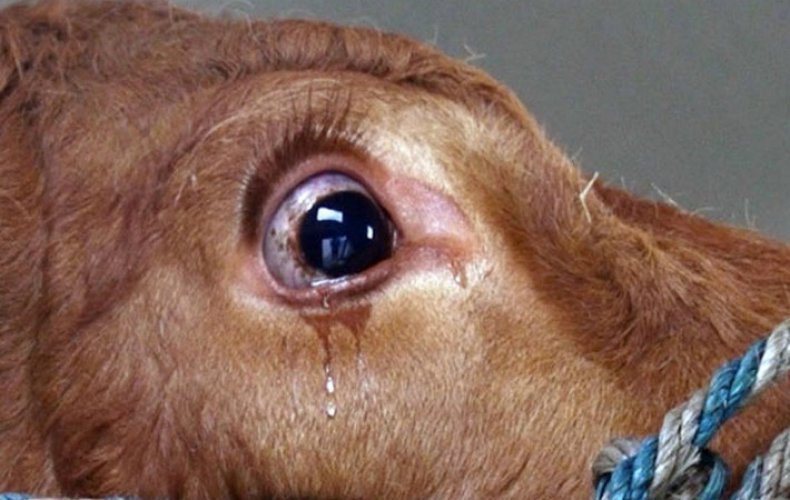
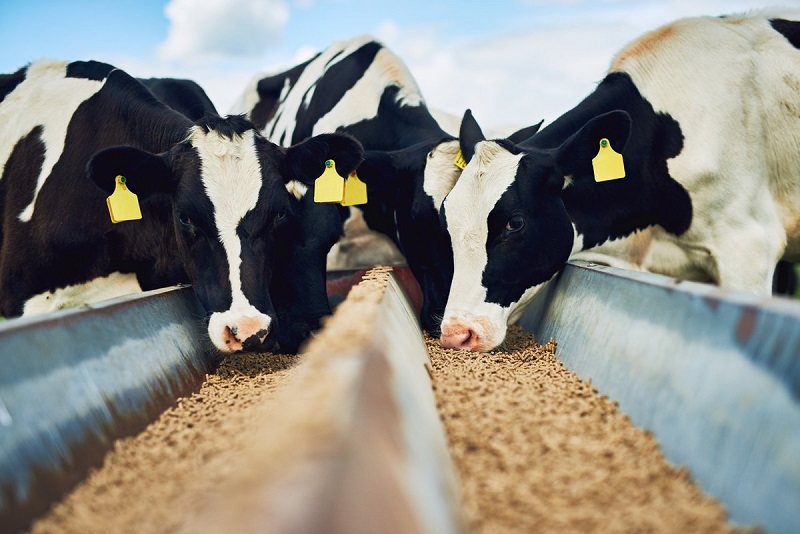
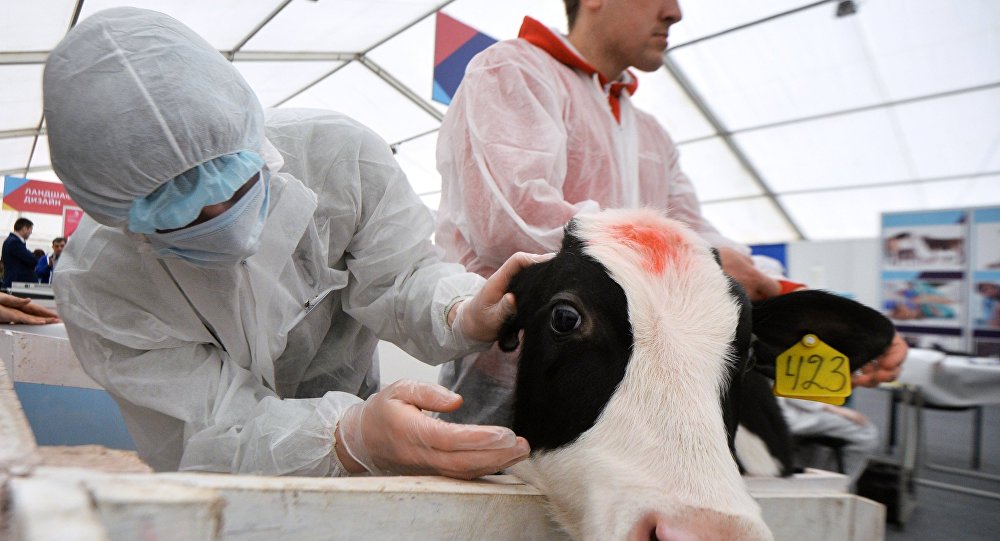
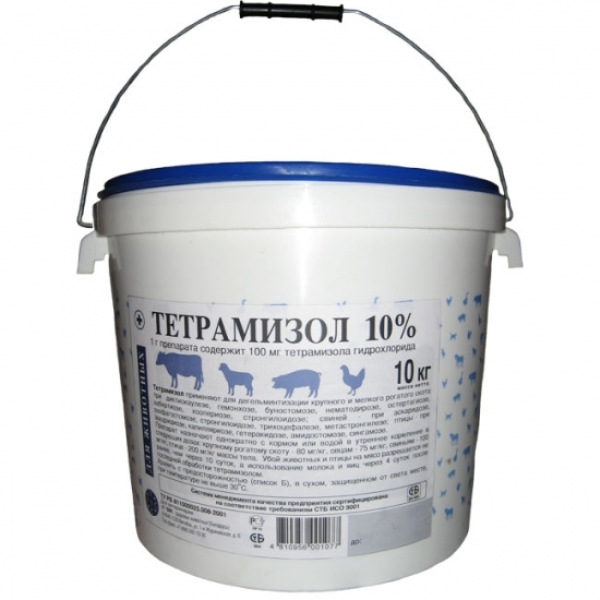
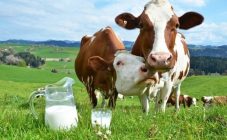
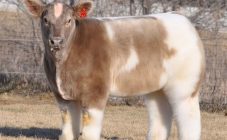
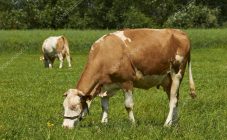
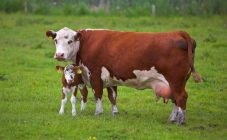
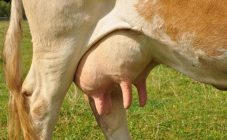
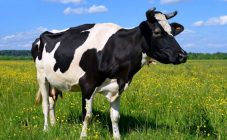







If you notice the very beginning of the disease in time, you can do only with chamomile - it helped out several times.